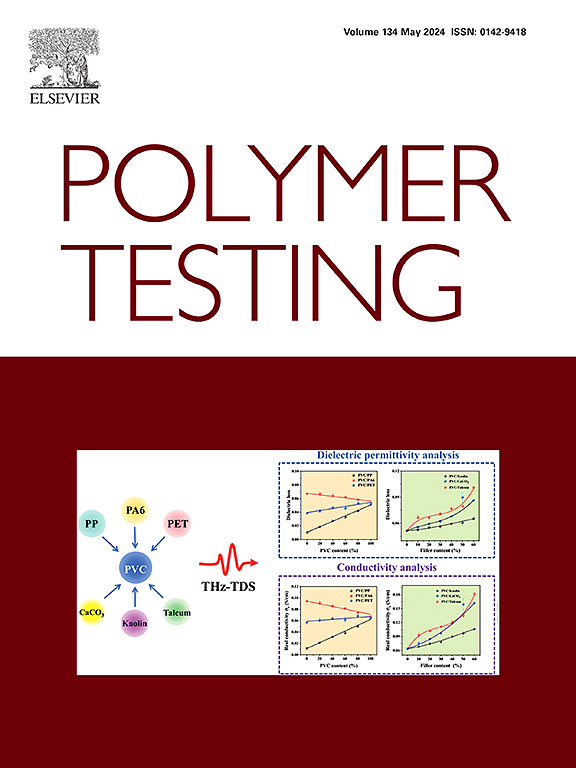Real-time non-destructive characterization of epoxy resin curing kinetics and mechanical response for enhanced manufacturing quality control
IF 5
2区 材料科学
Q1 MATERIALS SCIENCE, CHARACTERIZATION & TESTING
引用次数: 0
Abstract
Controlling and monitoring the processing parameters during epoxy manufacturing is a challenging task and their variation impacts the curing process of the polymer and its final quality. To address this issue, destructive testing is typically performed for quality control and material characterization, which involves expensive lab-type equipment and instrument-specific sample preparation. Moreover, this type of testing cannot be taken in-field to perform an in-situ evaluation. This work presents a method to non-destructively evaluate the curing kinetics and viscoelastic properties of epoxy resin in real time due to variations in stoichiometry combining ultrasonics and Fourier Transform Infrared Spectroscopy. Samples with a different amine-to-epoxy ratio were manufactured and tested. Thermogravimetric analysis revealed that deviations from the recommended ratio promoted thermal degradation. Furthermore, changes in longitudinal sound speed were detected during the resin's curing process, resulting from variations in the polymer's chemical structure, and were correlated to the cure kinetics. The sound speeds of three baseline samples were determined during the curing process with an absolute error of ∼0.13 % while changing the amine content by ±40 % caused alterations in the curing process and changes in the final sound speeds of up to ∼3.6 %. The longitudinal and shear sound speeds were used to calculate the elastic properties of the material, including Young's modulus and Poisson's ratio. Finally, the curing kinetics were modeled using the Hill equation to better understand numerically the effect of varying stoichiometry in the curing process. This approach has the potential to non-destructively characterize the properties of polymers in both an in-field and manufacturing setting, aiding in the tailoring process and ensuring their reliability in demanding applications.
求助全文
约1分钟内获得全文
求助全文
来源期刊

Polymer Testing
工程技术-材料科学:表征与测试
CiteScore
10.70
自引率
5.90%
发文量
328
审稿时长
44 days
期刊介绍:
Polymer Testing focuses on the testing, analysis and characterization of polymer materials, including both synthetic and natural or biobased polymers. Novel testing methods and the testing of novel polymeric materials in bulk, solution and dispersion is covered. In addition, we welcome the submission of the testing of polymeric materials for a wide range of applications and industrial products as well as nanoscale characterization.
The scope includes but is not limited to the following main topics:
Novel testing methods and Chemical analysis
• mechanical, thermal, electrical, chemical, imaging, spectroscopy, scattering and rheology
Physical properties and behaviour of novel polymer systems
• nanoscale properties, morphology, transport properties
Degradation and recycling of polymeric materials when combined with novel testing or characterization methods
• degradation, biodegradation, ageing and fire retardancy
Modelling and Simulation work will be only considered when it is linked to new or previously published experimental results.
 求助内容:
求助内容: 应助结果提醒方式:
应助结果提醒方式:


